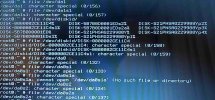Dear Anybody!
I try to mount (manipulate) USB disk containing freebsd (ufs(2)) partition.
The FreeBSD version is 13.x on amd64 and in LiveCD mode.
If I try to mount (just for test) a fat32 USB disk, then it is works well.
If I try to mount the ufs disk with no type or with ufs type then I get error message “No such file or directory”.
If I try to mount the ufs on linux (with type ufs2) then it is work fine (read and write) except the 2GB write limit of kernel.
The usf partition by "gpart show" is freebsd.
Thanks for any idea.
I try to mount (manipulate) USB disk containing freebsd (ufs(2)) partition.
The FreeBSD version is 13.x on amd64 and in LiveCD mode.
If I try to mount (just for test) a fat32 USB disk, then it is works well.
If I try to mount the ufs disk with no type or with ufs type then I get error message “No such file or directory”.
If I try to mount the ufs on linux (with type ufs2) then it is work fine (read and write) except the 2GB write limit of kernel.
The usf partition by "gpart show" is freebsd.
Thanks for any idea.




